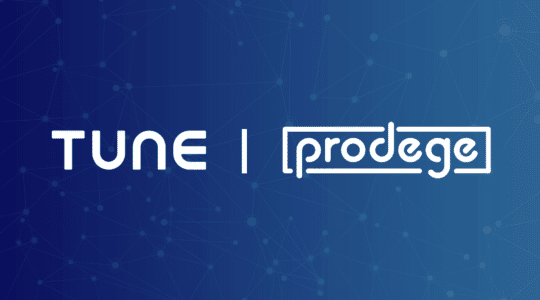
Photo by rawpixel on Unsplash
Some say that negotiating is an art. Others, a science. Ask a media buyer, and they’ll tell you it’s a little bit of both.
As expert negotiators for media placement, prices, and platforms, the best media buyers are always attuned to their audience. They stay on top of audience needs and preferences, popular channels and reach, and emerging technology, including virtual reality, over-the-top (OTT), and voice. With a stream of new channels vying for advertising share, and new creative avenues and opportunities to go with them, the modern media buyer’s role must evolve to keep up.
Interested to learn how top creative and media agencies are blazing new trails in digital advertising? Join TUNE and a thousand of your fellow marketers at the 6th annual mobile event of the summer, Postback. Held July 19-20 in Seattle, Postback brings together mobile marketing’s best and brightest to network, learn, and share the industry’s next big ideas.
In this blog post, we’ll review the biggest mobile web and app opportunities for media buyers in 2018, and discuss the top emerging supply-side options to keep an eye on in the months to come.
Mobile Apps
Smartphone users spend 87% of their total mobile minutes in-app. That’s two hours and nine minutes per day that advertisers can use to engage with consumers, at home or on the go.
One area of recent focus for media buyers is hyper-local advertising, shown to significantly increase conversion rates. Through hyper-local advertising, media buyers can geo-locate customers using segmentation based on location, sensors, or beacons. While a proximity of one mile is considered the standard for hyperlocal advertising, it’s possible for advertisers to segment down to in-store accuracy through beacons, creating mobile moments that can influence buying decisions in real-time.
Mobile Web
Along with mobile apps, many media buyers favor mobile web because mobile cookies can streamline tracking and attribution. However, mobile cookies aren’t without their own challenges; Q4 2017 research shows that users reject mobile cookies 75% of the time, compared with 41% on desktop. Plus, the GDPR will consider cookies that identify a specific device, or the person using it, as “personal” data — a big collection no-no after May 25th.
Over-the-Top
The benefit of OTT media to buyers is that it provides characteristic 15- to 30-second TV advertising slots, but with much higher engagement than cable TV commercials. Because viewers control the shows they watch and when they watch, they are more invested in that content — not channel surfing like they often do with traditional TV. What’s more, unlike TV commercials, most OTT ads are mandatory viewing, leading to a completion rate of around 97%.
OTT also offers advanced targeting capabilities so media buyers can narrow down to zip code, demographic, and behavioral segments. With new capabilities like targeting via device ID, advertisers can leverage their first-party data or data management platform to better reach their target customers.
AI, Machine Learning, and Programmatic
AI and machine learning (yes, they’re two different things) are impacting every aspect of adtech. When it comes to programmatic ad buying, these technologies connect media buyers to the right publishers via algorithms, then automate the entire buying process using the price and placement thresholds set by the buyers. The actual ad inventory is bought and sold in an exchange that involves both demand- and supply-side platforms in addition to data management solutions.
One major change of note to programmatic advertising is that it’s increasingly being brought in-house. AdAge found that the number of brands moving programmatic media buying in-house doubled to 35% in 2017. And an Adobe market survey found that two out of three marketers are planning to bring their programmatic efforts in-house by 2022. By leveraging AI and programmatic, even in their in-house systems, agencies will increasingly be able to automate and execute on real-time buying decisions, versus having to assess in longer windows.
Virtual Reality
There’s no doubt virtual reality will increase in prominence, with eMarketer estimating that 22.4 million people in the U.S. will engage with a form of VR at least monthly this year. That number is expected to increase to 49.2 million by 2019. As more people purchase VR products and the technology improves, advertisers will be able to serve arguably the most immersive and engaging ads to date. Keep an eye on announcements in the space, and consider laying the groundwork now for future VR campaigns.
Digital Voice
Along with virtual reality, voice technology is on the rise, with 45 million people expected to use voice assistants this year, and 52 million in 2019. Yet media buyers face a couple unique challenges in this new channel.
The first challenge: Consumers who use voice are generally looking for an answer to a question. That means only one or two paid search results will be served up, one at a time, instead of a list of search results presented all at once — the way things work now. The second challenge: It takes more time to listen to content than it does to read or skim it. So with the same 24 hours each day, voice ads could become more expensive than other channels as they compete for limited or selective supply.
Finding Your Best Opportunities
To find your best advertising partners, check out our Mobile Advertising Index. It allows you to quickly discover and evaluate top ad partners based on your custom needs, filtered by 20 criteria including platform type, ad format, location, and payout structure.
Author
Becky is the Senior Content Marketing Manager at TUNE. Before TUNE, she handled content strategy and marketing communications at several tech startups in the Bay Area. Becky received her bachelor's degree in English from Wake Forest University. After a decade in San Francisco and Seattle, she has returned home to Charleston, SC, where you can find her strolling through Hampton Park with her pup and enjoying the simple things between adventures with friends and family.




Leave a Reply
You must be logged in to post a comment.